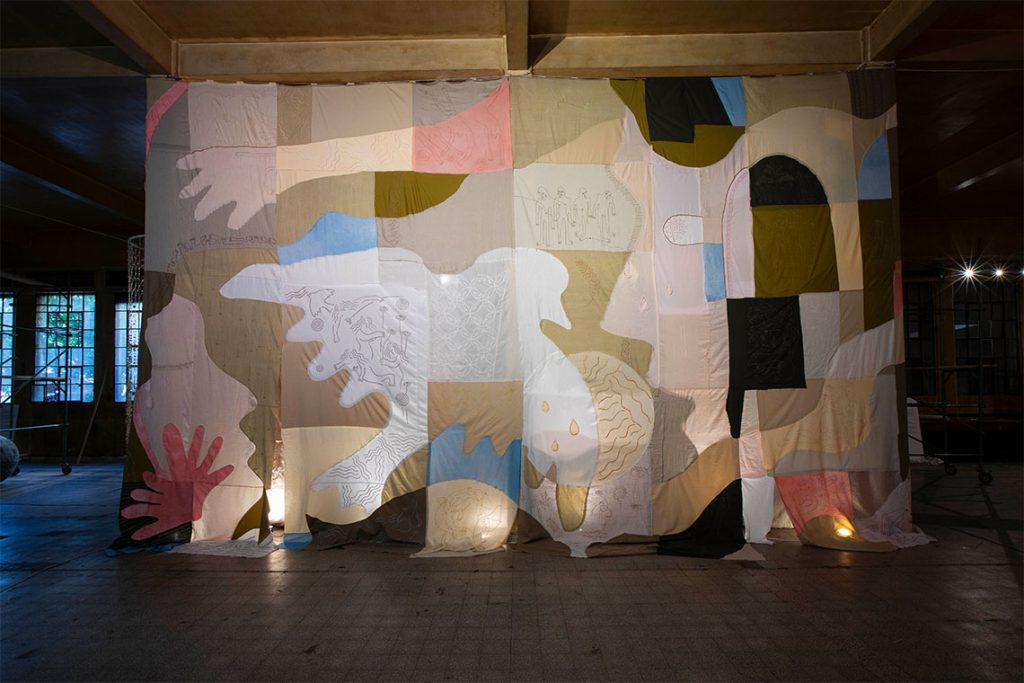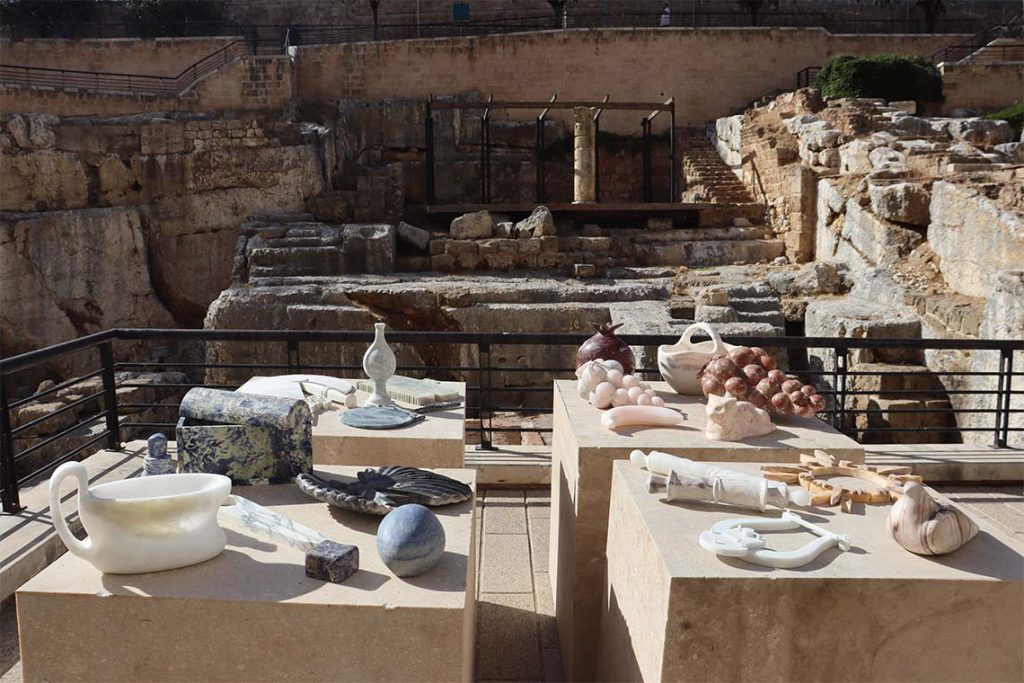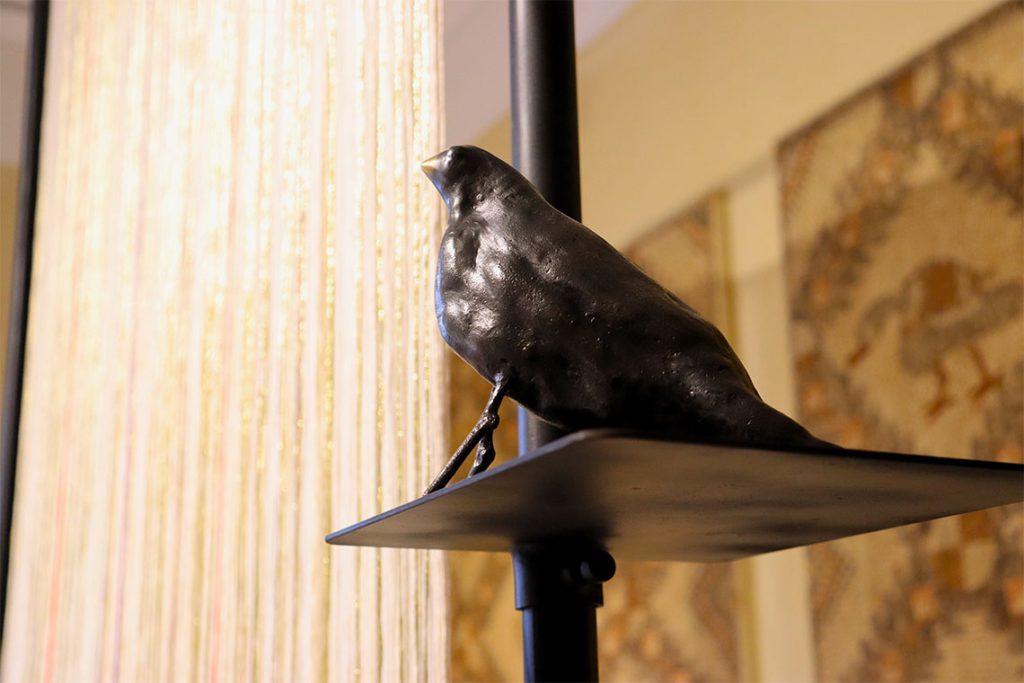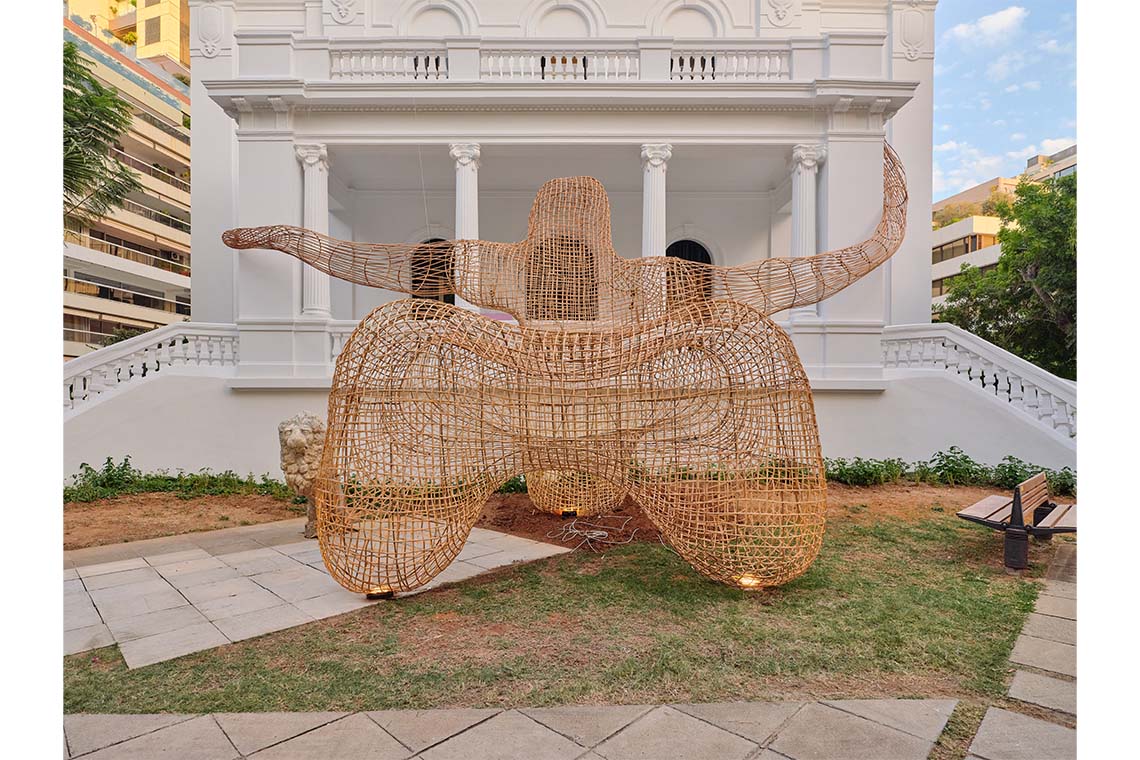The latest edition of We Design Beirut blurred the boundaries between art, design and architecture in a reflection of Lebanon’s dynamic creativity.
Now in its second iteration, We Design Beirut (WDB) has always placed a multidisciplinary approach at the forefront of its values, seeking to dismantle boundaries between professions and instead focus on creative exchange that experiments with medium and method. Staged from 22–26 October across several architectural landmarks around Beirut, the event gathered artists, designers, architects and cultural practitioners as part of eight different curated exhibitions, exploring themes of revival, legacy and continuity in different forms. All the creations were site-specific and encouraged the creators to work in new ways that challenged their practices, crafting installations that resonated with the city’s palimpsest of history, urbanity and political realities.
“We’re really trying to bring the whole community together, rather than put labels that say this is purely a design show or an art show,” founder Mariana Wehbe said to Canvas. “WDB was never a fair where you’re coming to buy tables and chairs. There are some pieces that are functional design pieces, but then there are others that have a story to tell.” Certainly there were pieces on show which, even though they were made by a designer, are more like art installations. “We invited artists to work with craftsmen or use unfamiliar media, to really push beyond,” continued Wehbe. “I think we’ve managed to cross those boundaries to create impactful dialogue that captures all that Lebanon is about.”

One of the exhibitions, Threads of Life, took over the Abroyan Factory, a 1930s industrial textile factory that was left to deteriorate in the 1990s. The show is all about celebrating and preserving Lebanon’s fading traditional textile crafts, and finding ways to revive the medium. Illustrator Ahmed Amer, who usually creates lively yet minimalist line-drawing artworks, crafted a monumental textile mural in collaboration with several artisans. Entitled Textured Love and composed of layered panels of deadstock fabrics that have been dyed, patched, embroidered and stitched into a collective composition, the piece was draped over a rafter and between two columns. “Each frame carries a unique Levantine or Aghabani embroidery motif, fusing traditional craftsmanship with my personal artistic language shaped through Beirut,” Amer explained. “Individually, the frames embody values, moments and phases, symbols of memory, resilience and transformation. Together, they form a single, large-scale drawing that breathes with revival, hope, comfort, and belonging.”
The act of dyeing rendered new life to the discarded fabrics, with the connected panels reflecting community and multicultural dialogue. “The work highlights harmony between creative and industrial practices, emphasising collaboration, communication and the process of making,” Amer continued. “At its heart, it pays homage to the artisans whose hands guided the threads, shedding light on the layered emotional phases of my journey with Beirut.”
Over at the Roman Baths archaeological site, 21 designers were tasked with creating sculptures and installations out of marble for the show Of Water & Stone, curated by Nour Osseiran, and inspired by themes of ritual, healing and memory. Egyptian artist and designer Omar Chakil presented a purely conceptual installation, Memory Upcycle, featuring 700 stone capsule boxes filled with medicinal salt and thyme, streaming down the staircase like a river – recalling the rivers that were once connected to the baths by aqueducts, and the healing properties of water and salt.

Editions Levantine, a design studio that aims to reinvent the Levantine aesthetic, created a playful series of decorative objects entitled Daughters of Berytus. The sculptural objects place the stories of Beirut’s women across time at the forefront, telling the tales of Barbara the healer, Mariam the bride, Theodora the poetess and Martha the mother through their possessions – a lyre, scrolls, jewellery, a cat – made from marble. “For this exhibition we are presenting four sculptural retrospectives of women, emerging as soft monuments to memory and matter. They each embody the quiet strength of those who once walked these stones in the first century AD,” the collective stated. “Their presence is evoked through daily objects, a comb, a bowl, a vial, a necklace. These objects are sculpted in marble not as relics but as living testaments, and each one carries traces of care, ritual, and thought. These once-intimate items are now almost fossilised in stone, blurring the line between the domestic and the eternal.”
Totems of the Present & the Absent at Villa Audi was similarly artistic in nature, with more than 50 creatives asked to craft a ‘totem’ of some kind, inspired by Beirut and its myriad facets. Many of the designers, who would normally create functional items or furniture, instead conceived installations that embodied emotions, stories, moments of history and possible futures. Ranging in size, material and form, the totems were hugely varied, from Lebanese designer Fadi Yachoui’s titan-sized wicker figure, which wrapped around and through Villa Audi, to Lebanese tablescape enthusiast and designer Lea Majdalani’s Solace, a two-metre tall floral arrangement candle carved entirely from wax.

Photography by Maghie Ghali
Artist Sara Badr Schmidt, represented by Saleh Barakat Gallery, created Page Blanche, a textile artwork accompanied by a poetry piece and bronze statue of a bird. White, purple, blue, red and gold threads were hung in a metal frame, with each colour symbolising a different part of Beirut’s identity. Purple evokes ancient wealth and Phoenician dyes, while red references the various wars and unhealed trauma. The sea was represented by the blue thread and gold echoed the sun and the Lebanese people’s enduring light. The white was a blank page, open to reinvention.
“Participating in WDB with my piece Page Blanche is more than an artistic commitment for me,” said Schmidt. “It’s a symbolic, intimate return to a city that continues to inhabit my memory. The theme of this edition, between attachment and departure, memory and place, deeply resonates with my practice. My work explores the invisible threads we weave with the places we leave, without ever fully leaving them behind.”
WDB’s strength lay in its ability to create a dynamic, city-wide dialogue that captured Lebanon’s complex narrative of turbulent history, a creative scene that continuously tries to reinvent itself, and hope for a better future. Its shows were diverse in theme, but all united by a common thread of collaboration, support and collective healing. For visitors, the event can be a gateway to understanding the chaos of Lebanon, but for locals it is a form of catharsis.



